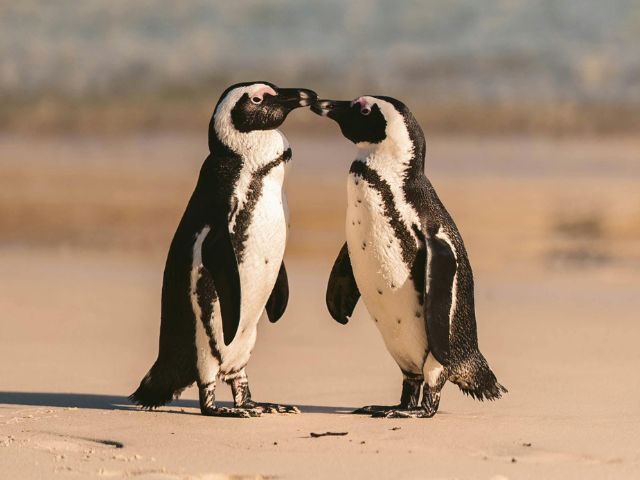[imagesource:pexels]
One of the first images that surfaces when Googling our gorgeous Mother City is a snap of our beloved African Penguins catching some sun on Boulder’s Beach; sadly, these tuxedoed, feathered local celebs have quickly gone from a protected species to one in danger of extinction.
This global issue of the staggering decline in the African Penguin population has been under an acute spotlight since the publication of a scientific paper titled ‘The African Penguin Spheniscus demersus should be considered Critically Endangered,’ released last week.
Dr Richard Sherley of the Environment and Sustainability Institute/Centre for Ecology and Conservation at the University of Exeter in Cornwall, UK, led the study with 11 co-authors, including prominent local scientists, managers, and conservationists.
The research team collected data on penguin breeding pairs from censuses conducted at 26 colonies in South Africa and Namibia between 1979 and 2023, which was subsequently analysed to determine the rate of decline and the species’ conservation status according to the IUCN (International Union for Conservation of Nature) Red List criteria.
The overwhelming findings? The African Penguin meets the criteria to be listed as “critically endangered” and thus should be treated as such.
Nina Braude, senior attorney at the Biodiversity Law Centre in Cape Town explained that the impact of Sherley and his colleagues’ work is monumental for the protection of the species.
Braude, among others, is hoping that this seminal piece of research will help environmental activists place additional pressure on the IUCN to raise the African Penguin’s threat status from “Endangered” to “Critically Endangered” on their Red List of Threatened Species.
The IUCN has specific procedures for submissions of this nature and uses designated “Red List Authorities” for threatened status assessments. In the case of our beloved African Penguin, BirdLife International, the global authority responsible for coordinating bird population evaluations, recommended the change based on the Ostrich paper. We now await with bated breath as the IUCN is expected to publish its final decision on the matter in October of this year.
Sherley and his research team have highlighted that although the total population size at the start of the 20th century is unknown, the African Penguin may have been the region’s most abundant seabird, with between 1.5 and three million individuals.
This is certainly not the first time the African Penguin’s conservation status has been reviewed since the first population estimate was released to the public in 1956. In 1984, the species was listed as “Vulnerable” on the IUCN’s Red List, and by 2007, it was uplisted to “Endangered.” Apart from a brief period around 2000, the population has been in constant decline since, at least, the 1950s.
Sherley and his team’s thorough new research sheds light on just how dire the situation is now, in 2024. This marks the first time in history that the global breeding population of African Penguins has fallen below 10,000 pairs. The authors of the landslide paper have not only provided sobering data but have issued a desperate warning in response to their findings:
“In other words, substantially more birds (more than 25%) have been lost in less than ten years than now remain in the African Penguin population. Thus, it is not unreasonable to be concerned that — if these rates of decline persist — the species could become extinct in the wild by 2035.”
Now, it’s important to remember that these numbers are based on a relatively ‘stable’ ongoing decline and, sometimes, disasters may happen that contribute adversely to the current numbers.
As many will remember, on 23 June 2000, South Africa faced what would be dubbed the world’s worst coastal seabird environmental disaster ever. Moments like these can, and do, have an additional impact on the African Penguin population.
On that fateful day in 2000, the ore-carrying MV Treasure broke apart and sank 8km north of Robben Island while a salvage tug attempted to tow it to safety. Over 1,100 tons of highly toxic heavy fuel oil into the ocean, devastating the local marine life and affecting tens of thousands of African Penguins from two major breeding colonies on Robben Island and Dassen Island.
An international team worked tirelessly to clean and rehabilitate the poor greased-up birds for months, and through perseverance and tenacity managed to clean and release approximately 38,500 of the affected creatures.
Fast forward 24 years, a mere blink on the evolutionary timescale, and the African Penguin population has plummeted to around 31,700 individuals from Namibia to the Eastern Cape. The terrifying reality is that this figure is several thousand fewer than the number of penguins saved during the MV Treasure disaster.
These gorgeous critters deserve protection, so we’ll be patiently awaiting the go-ahead for our African Penguins to be considered in the red zone. In the meantime, keep treating them like the precious little beasties they are.
[image:groundup]





